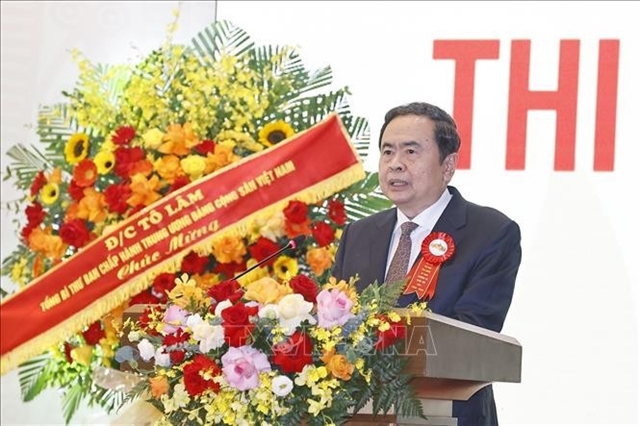 Economy
Economy


|
| Seafood is one of Việt Nam's main exports to the UK. VNA Photo |
HCM CITY – The FTA Index, together with other indexes, will help businesses gain a clearer view of the development, reform and adaptation process to free trade agreements, such as the UKVFTA.
To date, Việt Nam has participated in a total of 16 free trade agreements (FTAs), opening up opportunities to expand export markets, attract foreign investment, and promote economic and trade development of provinces and cities.
In particular, new-generation FTAs such as CPTPP, EVFTA and UKVFTA have opened up many opportunities for Việt Nam to grow, diversify import and export markets and attract foreign investment.
However, the implementation and utilisation of FTAs such as the UKVFTA are still uneven among localities, requiring stronger measurement, evaluation and solutions from implementing management agencies.
"FTA Index was created to support central and local agencies, investors, people and businesses to better utilise FTAs. It will measure the health and capacity of provinces and cities, supporting businesses in the implementation process," Deputy Head of WTO and FTA Department, Multilateral Trade Policy Department of the Ministry of Industry and Trade (MoIT) said at the FTA Index Seminar on December 6 in Hà Nội.
According to a recent report from the Ministry of Industry and Trade on the implementation of UK – Việt Nam Free Trade Agreement (UKVFTA), 44 of 63 provinces of Việt Nam have exported goods to the UK.
The UKVFTA has become a bridge to bring Vietnamese goods to the UK market, helping to increase bilateral trade turnover.
However, according to experts, businesses have not yet fully taken advantage of the benefits that FTAs bring.
In localities, although there has been much attention and support for businesses to take advantage of FTAs, it is still very modest, because human resources in many places are still very thin and have not been properly trained.
“We are lacking a detailed, transparent, specific and continuous mechanism to measure the results of FTAs implementation. From there, we can propose solutions and long-term implementation plans. Central and local agencies must have more specific and practical solutions to support businesses to effectively utilise these FTAs,” Phương said.
For example, localities have organised many activities to support businesses in taking advantage of FTAs but they do not focus on specific industries or the province's strengths.
According to the Ministry of Industry and Trade, although there have been many conferences and seminars to raise awareness about FTAs, the information provided by localities is not yet in-depth and specific to each industry, thus failing to meet the needs of businesses.
In addition, the Ministry also acknowledged that there are not enough state officials to carry out these activities well.
Nguyễn Thế Hiệp, deputy director of the Hà Nội Department of Industry and Trade, said that the growth rate of exports to FTA markets has increased compared to previous years, but in terms of scale and value, the proportion of Hà Nội's export turnover to these markets is not large. Therefore, the exploitation of these FTAs is not high.
The leaders of the Hà Nội Department of Industry and Trade hope that, in order to improve the implementation capacity and take advantage of FTAs, the FTA Index that the Ministry of Industry and Trade is striving to complete will reflect the results of state management activities as well as enterprises in the city to make timely and appropriate adjustments.
At the local level, the set of indicators needs to be complete, comprehensive, synchronous, feasible, and easy to implement for agencies and units from state management, enterprises, and monitoring agencies.

|
| Speakers at the seminar on FTA Index. Experts believe that the FTA Index will help businesses comprehensively change the value in implementing FTAs. — VNA/VNS Photo |
In addition, the FTA Index also needs to be proactive. Clarity and transparency will promote encouragement and creativity in implementing indicators on FTA utilisation and implementation.
Providing solutions to effectively operate and implement the FTA Index, the leader of the Hà Nội Department of Industry and Trade recommended that information and propaganda work should be carried out comprehensively to help raise the awareness of businesses, people and authorities to clearly understand the importance of FTAs and the significance of signed FTAs.
The FTA Index is likened to a map that finds the potential and strengths of businesses in the export sector.
During the three years of implementing the UKVFTA, total two-way trade turnover between the two countries grew by an average of 8.9 per cent per year, of which Việt Nam's exports to the UK grew by an average of 9.4 per cent per year.
Việt Nam's main exports to the UK are textiles, footwear, mechanical products, and aquatic products, of which textiles, footwear, agricultural and aquatic products benefit the most.
Over the past three years, the total number of registered projects of the UK in Việt Nam has increased by more than 1.5 times from 380 projects at the end of 2020 to 584 projects in 2024 with total capital of US$4.5 billion.
The UK's investment projects in Viet Nam are spread across many important fields from processing and manufacturing industry, financial services, banking, renewable energy, healthcare and pharmaceuticals. VNS




